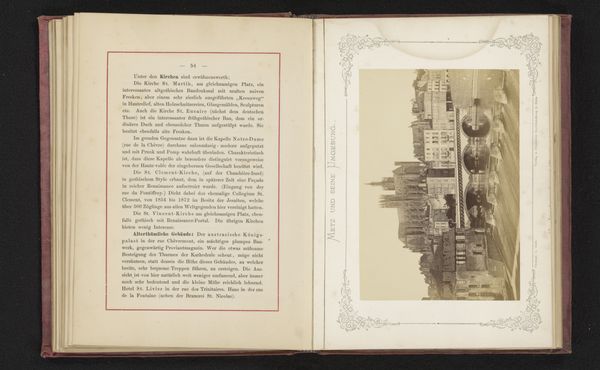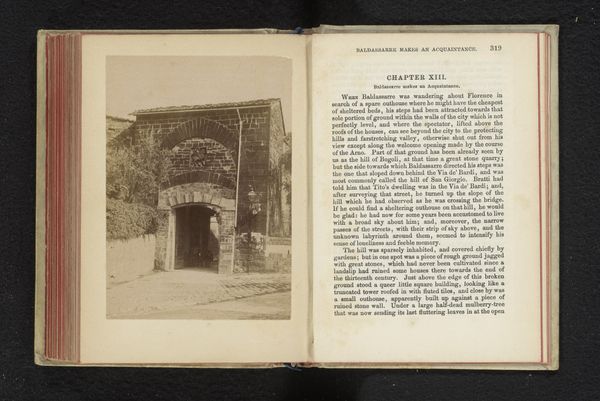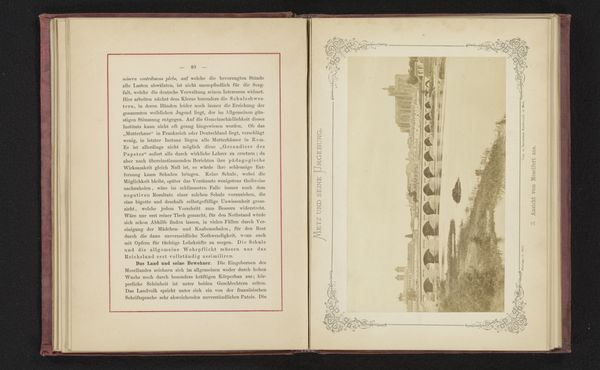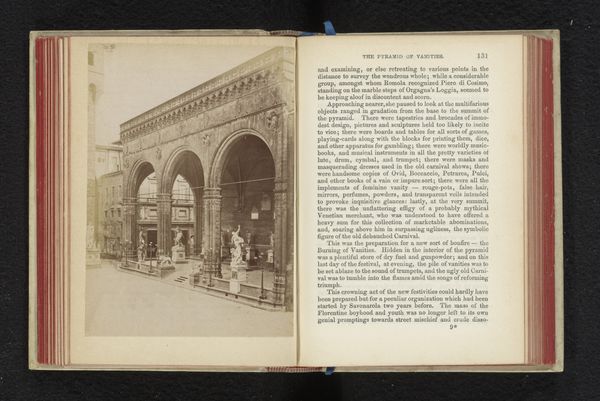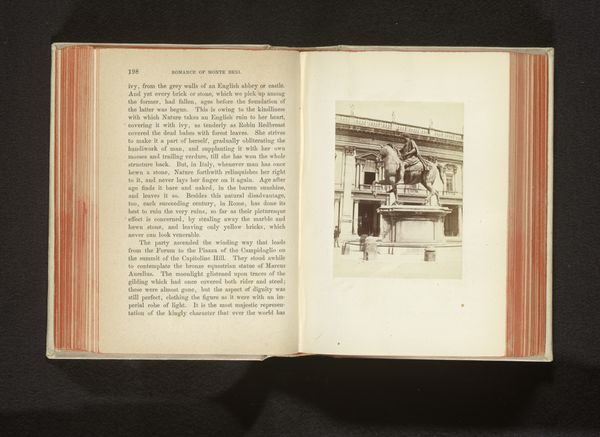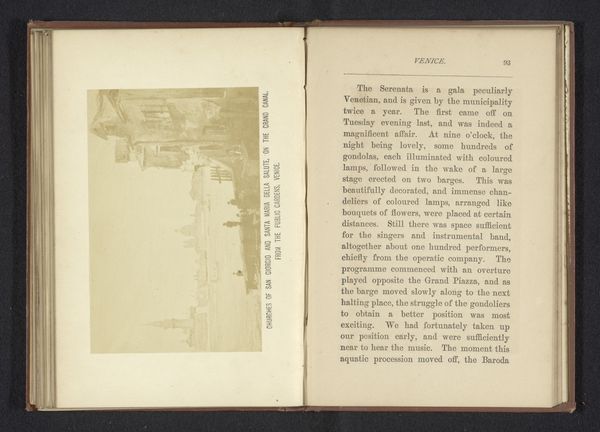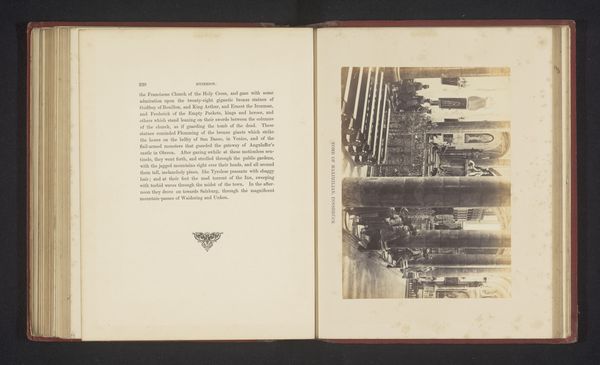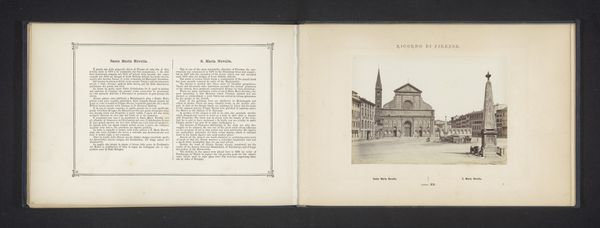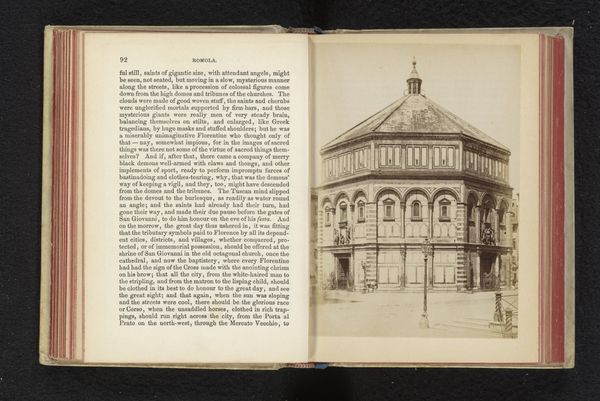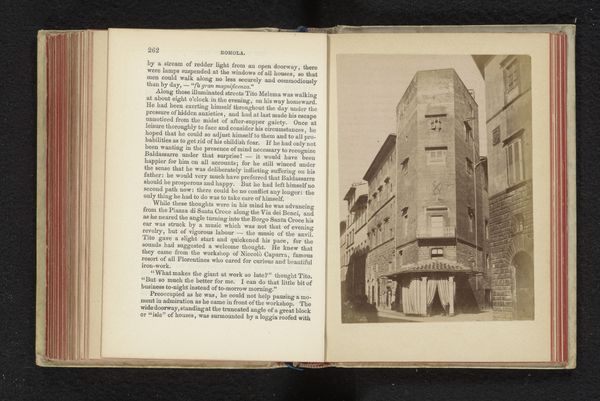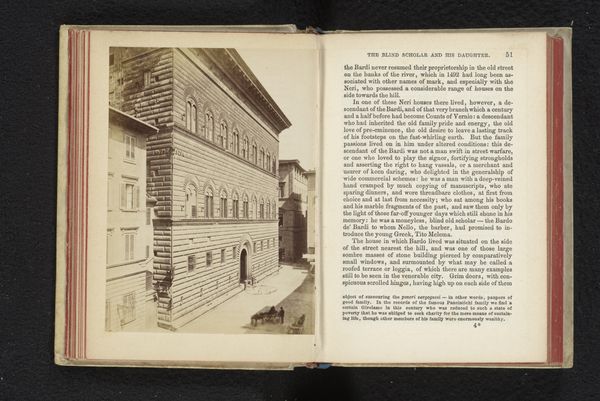
print, photography, albumen-print, architecture
#
aged paper
#
book binding
#
homemade paper
#
paper non-digital material
#
paperlike
# print
#
sketch book
#
hardpaper
#
landscape
#
photography
#
personal sketchbook
#
journal
#
cityscape
#
letter paper
#
italian-renaissance
#
albumen-print
#
architecture
#
realism
Dimensions: height 128 mm, width 90 mm
Copyright: Rijks Museum: Open Domain
Curator: Let's consider this striking albumen print titled "Palazzo Guadagni in Florence," taken by Giacomo Brogi before 1863. Editor: It has this incredibly intimate feel, like discovering a cherished page in someone’s travel journal, the warm sepia tones lending such character to both image and book. Curator: Absolutely, the book itself serves as a kind of frame, immediately drawing attention to composition. Look at how the Palazzo dominates the photograph with its geometric precision—the clear articulation of horizontal bands of windows. And observe the light; how it models the facade, creating contrast and depth! Editor: It really makes you wonder about the production of these photographs. The albumen process itself—laying egg whites to create the photographic emulsion is almost painterly in craft. And what kind of labor went into its reproduction as a bound print in this travel journal, intended to be consumed? Curator: Precisely! The visual weight imparted through this medium cannot be overstated. And think of the Renaissance revival here—the loggia, the embodiment of harmony and order. There's an ideology embedded here. The perfect building! The light is almost diagrammatic as a formal language itself. Editor: The binding suggests something quite different from pure formalism. Look at how the materials and aged patina create a haptic appeal! It transcends simply viewing architecture. What’s the experience, what’s the historical value that lies behind the labor, the agedness and the patina of the print? Curator: I’ll grant you, seeing the material reality offers such additional depth to the experience. This visual encoding presents as much semiotic interest as anything else in the presentation, that invites a different kind of formal reading… Editor: Exactly, understanding how things were made shifts your appreciation… gives a kind of humanity, right? It invites a different kind of formal appreciation. Curator: Ultimately, this print speaks to enduring power. Editor: An evocative glimpse, preserved in craft.
Comments
No comments
Be the first to comment and join the conversation on the ultimate creative platform.
